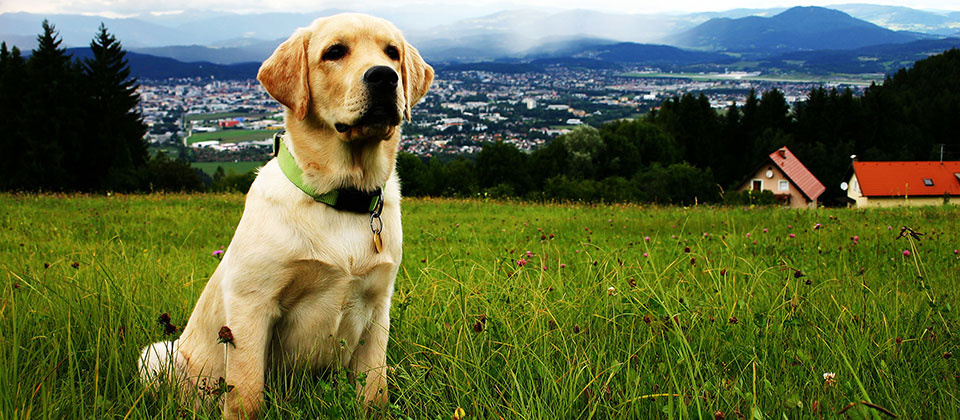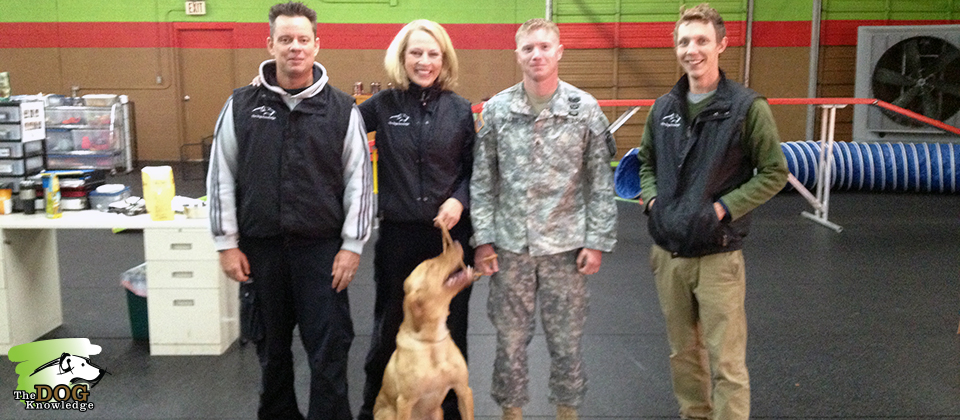TRAINING
By definition, a service dog is a dog that is individually trained to perform tasks that mitigate the disability of the dog's owner. Since each person experiences a disability differently and therefore has different needs for assistance, each dog is to some extent custom-trained for the individual it will be helping. For example, a dog meant to assist a person in a wheelchair might be taught to pick up dropped items, open and close doors, and turn on and off lights. A dog trained to assist a person who cannot see well might be taught to avoid obstacles.
A. OBEDIENCE FIRST
Once a real need has been determined, before any service can be trained, a dog must have obedience. And by obedience we don't simply mean sit, down, stay. By obedience we refer to a dog that has the temperament and environmental stability to be comfortable in all situations and that whatever the situation, they can continue to function their service dog task.
Our obedience requirements are as follows:
- A potential Service Dog must stand, sit or lay down and wait under control within the reach of their owner, while the owner sits at counter or table and completes paperwork.
- A potential Service Dog must lie quietly at their owners feet while the owner is sitting with another person (with or without a dog) during a casual meal or on a park bench.
- A potential Service Dog walks on a loose leash in a natural situation (not in a ring)-does not pull. Able to execute the following with a loose leash:
- left and right turn
- stop
- fast and slow pace
- A potential Service Dog walks on a loose leash through a crowd. This item is tested in a real crowd, not in a ring.
- A potential Service Dog walks past distraction dogs present; does not pull.
- A potential Service Dog must remain in a Sit-Stay in a small group (3 other people with dogs). Owners and dogs are in an informal group while owners have a conversation.
- A potential Service Dog allows with little or no reaction an approaching person carrying something large such as a box or package to approach and pet it. “May I pet your dog?” (Item is put on floor/ground before person pets dog)
- “Leave it.” A potential Service Dog walks by food and follows owner instructions, “Leave it.”
- A potential Service Dog remains in a Down or sit stay (owner’s choice) at a distance.
- A potential Service Dog must come when called with distractions. Handler goes out 20-ft. (off center) and calls dog. Dog comes past a distraction to return to handler.
- A potential Service Dog enters/exits a doorway or narrow passageway (on leash, with owner) in a controlled manner.
- A potential Service Dog must be environmentally sound and tested on high gloss floors, willingness to enter a revolving or sliding door and willing to enter an elevator.
All of the above training will be trained through positive reinforcement and never through avoidance or what we refer to as "shock collar training." Because at The Dog Knowledge, dog training center and our non-profit affiliate, TDK - DOGS DOING GOOD, INC., our philosophy is that a working/service dog works for the joy of pleasing not to avoid pain.
B. TEACHING THE "THINKING DOG"
Once a dog has a good obedience foundation and it is determined that the dog has the temperament foundation to withstand working under all conditions, we begin a process of free shaping to teach a dog to open up his/her mind to "think outside of the box." We teach a dog to solve problems and how to use his/her mouth, paws, hips, nose, etc. as tools.
Remember, obedience suppresses a dog's personality. To teach the "thinking dog" you must use a dog's natural desire to work and please. There is a fine art to this type training as it must be taught or for lack of a better word "captured" in small increments. Somewhat like taking a series of pictures that eventually lead to a specific overall portrait of what we want the dog to do. Push a dog too hard and they will digress. Push a dog too long and they will get bored. Push a dog too fast and they will get frustrated. This is when we separate the great trainers from the mediocre trainers. The great trainers instinctively know just how hard to push a dog to keep up their enthusiasm. The great trainers know that it is important to know when to stop training at the peak of the dog's excitement. Think of this as the guests that stay a day too long. If they had left a day earlier, everyone would be sitting around wishing they had stayed another day. If they had stayed a day longer, everyone would have been sitting around relieved that the guests had finally departed. The great trainers of dogs know that moment to stop to maximize each and every training session.
Watch this video to see some of the incredible skills a dog can learn through free shaping!
C. FINE TUNING A DOG'S SKILLS
It may sound too simple, but simply put, a dog that has been taught obedience and how to function in society in a polite controlled manner combined with a dog that has been taught to open up his/her mind and become a "thinking dog," can be taught anything in a very short period of time.
At TDK - DOGS DOING GOOD, INC. we work to train all of our potential service dogs through obedience and free shaping or thinking outside of the box. Then when the right candidate comes along, the final skills that the dog will need to be of assistance to this individual can be taught in an extremely short period of time. From training a dog to detect peanuts for a child with peanut allergies, to training a dog as a diabetic alert dog, to training a dog as a mobility dog to act as an extra set of hands and feet; the list is endless as to what direction we can go with a dog that has this foundation.



